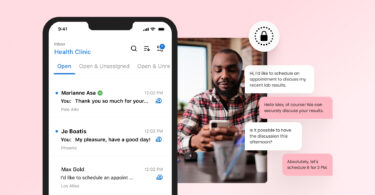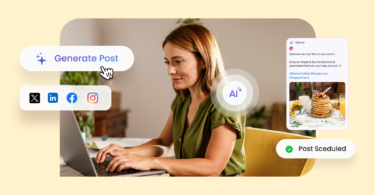Have you ever heard of the “Rule of Seven?” It’s a theory that a consumer must be exposed to a brand or product seven times before purchasing. While this isn’t necessarily a hard and fast rule, there’s truth behind it — consistent and repeated exposure plays a crucial role in transforming potential customers into actual buyers.
Today’s marketers understand this well. In fact, according to Birdeye data, 36% of multi-location marketers send personalized messages to their customers daily.
A drip campaign is one of the most simple and effective ways to put this knowledge into action.
A drip campaign, or drip marketing, is a powerful technique for brands to nurture leads, retain customers, and increase repeat sales. In this blog, we’ll provide an in-depth look at everything you need to know to plan and execute effective drip marketing campaigns.
Table of contents
- What is a drip campaign?
- How drip marketing works
- Drip campaigns vs. nurture campaigns
- 6 benefits of drip campaigns
- 9 types of drip campaigns to try
- Reasons to use drip campaigns
- How to set up a drip campaign
- Drip campaign best practices
- Drip campaign examples and ideas by industry
- Drip marketing FAQs
- Become a drip marketing master with Birdeye
What is a drip campaign?
A drip campaign is a strategic tactic that involves sending a pre-written set of automated messages to prospects or customers over time. The key to drip marketing is that the messages are scheduled ahead of time to be delivered on a specific date or triggered by a specific action.
Unlike typical marketing blasts sent to a big list all at once, drip campaigns are designed to build relationships gradually with compelling content. When done correctly, drip marketing allows you to guide recipients through a story specific to your products or services. The sequential messaging keeps your brand top of mind until subscribers are ready to convert or make another purchase.
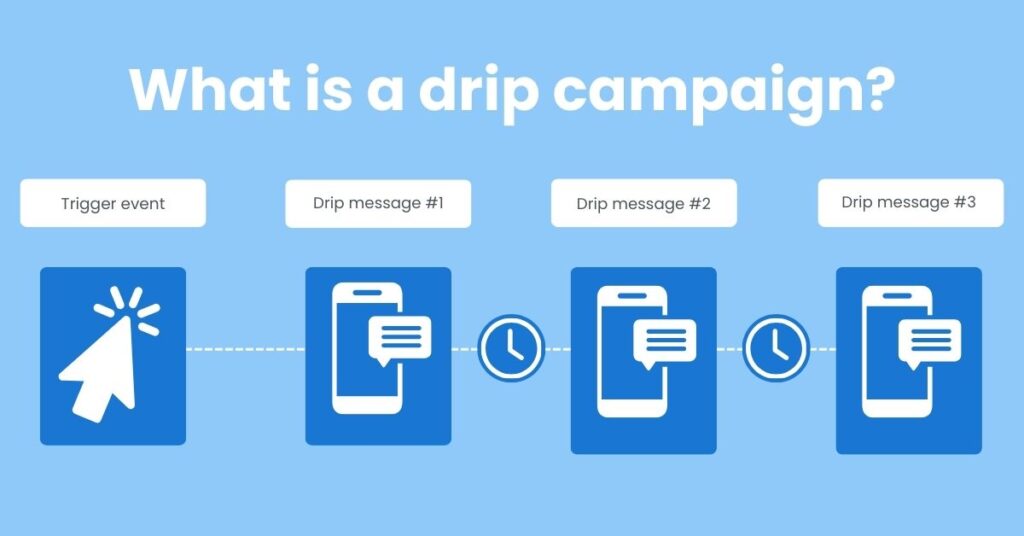
How drip marketing works
So, how does drip marketing work? Here is a basic rundown:
- Marketers draft messages, set timing, and establish triggers for sending in advance.
- They segment contacts into groups based on interests, actions, or other attributes.
- They map out a series of emails or texts to align with the customer journey.
Pro tip: There’s no right or wrong number of messages to include in a drip campaign, but generally, somewhere between 4 and 12 is a great goal.
- Messages are automatically sent without additional effort based on schedule/triggers.
- API integrations allow dripping across multiple channels like email, SMS, or web ads.
- Advanced tools track opens, clicks, and purchases to gauge engagement.
Critical components of drip campaigns
While different campaigns will call for different approaches, here are a few key components that every effective drip campaign should include:
- Pre-written subject lines and message content
- Automated sequencing across channels based on time or user actions
- Segmentation of subscriber list into targeted groups
- Integrations with CRM, SMS, and marketing automation platforms
- Analytics to optimize and improve future campaigns
Text more customers. Drive more revenue.
Want to see the impact of Birdeye on your business? Watch the Free Demo Now.
Drip campaigns vs. nurture campaigns
Drip marketing is sometimes confused with nurture campaigns, but the two have some key differences.
Nurture campaigns engage all subscribers by sending relevant content based on their interests and behaviors. The goal is to nurture relationships by providing value.
On the other hand, Drip campaigns have a more specific purpose of converting subscribers into customers or encouraging repeat purchases. The focus is guiding the recipient through a journey with content relevant to each stage.
In other words, drip campaigns are highly targeted and personalized journeys focused oen strategic business goals. Nurture campaigns aim to build relationships with a larger audience through content that meets their needs.
| Drip campaigns | Nurture campaigns |
| Follows a predetermined path for all users | Flexible content based on user actions and interests |
| Focused segments and tight timing | Broad segments and ongoing engagement |
| Drives conversions | Builds awareness and loyalty |
| Fixed number of messages for all recipients | Continuous engagement |
| Closely tracked ROI | Brand awareness and perception |
In practice, brands often set up nurture streams to attract and engage new contacts, then transition them into a targeted drip campaign funnel designed to convert leads or re-engage customers. The two strategies work very well together!
6 benefits of drip campaigns
Drip campaigns require strategic planning and preparation — it sounds like a lot of work, but the results will be well worth it. Speaking of the results, let’s talk about what’s in it for your brand. Switching from mass blasts to orchestrated drip campaigns provides various benefits.
1. Increased conversions
Drip campaigns convert more leads into customers by building trust and credibility through valuable content over time. Slowly nurturing prospects reduces resistance and positions your brand as a helpful expert rather than a pushy salesperson.
2. Improved retention
Current customers receive relevant, engaging content that improves satisfaction and keeps your brand top of mind. Happy customers who continue seeing value after the initial purchase are more likely to trust you and make future purchases.
3. Higher engagement
People prefer to engage with content that interests or feels relevant to them. When you guide recipients through a storyline specific to their interests over several touchpoints, they pay more attention and interact more than they would with traditional email blasts.
4. Personalization at scale
Automation technology allows you to deliver a personalized experience to each recipient. You can create customized journeys based on interests, actions, demographics, purchase history, etc. Your customers get personalized content, and you save time, energy, and resources that could be allocated elsewhere.
5. Consistent brand messaging
Drip campaigns allow you to reinforce brand messaging and core value propositions through a series of thematically aligned emails. This repetition establishes familiarity and trust.
6. Insight through analytics
In-depth tracking of drip campaigns provides data like open rates, click rates, and conversion rates. You can use this intel to optimize future messaging, timing, content offers, and more.
9 types of drip campaigns to try
Drip marketing is highly versatile — it can support various goals. Not sure how you’d leverage this marketing tactic for your business? Here are some popular use cases to get your creative juices flowing.
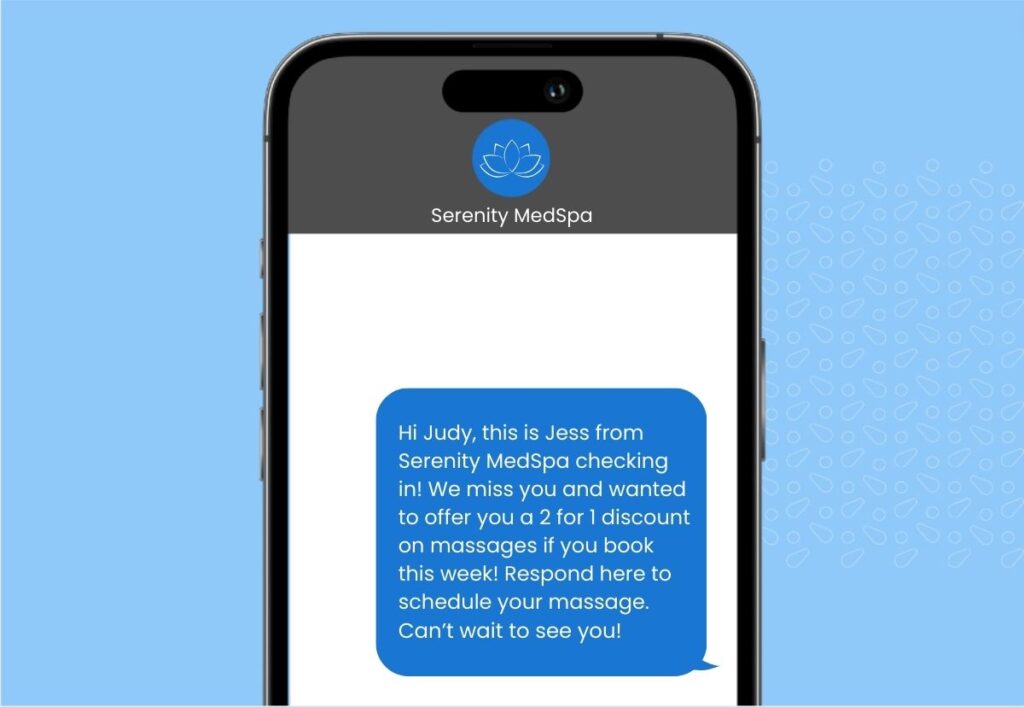
1. Customer re-engagement
Bring inactive contacts back into the fold with discounts, new features, abandoned cart emails, or an invitation to reconnect after a period of no engagement. Promote repeat business with existing customers by providing exclusive content, early access to new products, or special discounts only for loyal subscribers.
2. Onboarding drips
Onboarding drips move new users through an initial setup process while explaining key features or offerings. This kind of drip campaign is especially effective for subscription services, financial firms, or software platforms.
3. Product launch drips
Creating some hype about what you offer is essential regardless of your industry. You want your current and potential customers to feel excited about working with you. Consider building excitement by providing early access, driving preorders, or announcing availability with a targeted drip campaign whenever you launch a new product or service.
4. Lead nurturing
Nobody likes a pushy salesman trying to get them to buy in immediately. Nurture cold leads by positioning your brand as a trusted advisor rather than pushing for an immediate sale. Warm them up with valuable content over time and build a relationship that is sure to last.
5. Welcome series
Guide new subscribers through a 3 to 5-part email journey introducing your brand, products, services, and community. Welcome series aims to start relationships off on the right foot. Building a solid foundation will improve customer loyalty in the long run.
6. Event promotion
Do you have a big event around the corner? Get more registrants to virtual or in-person events by promoting through a drip campaign leading up to the event. This approach will build excitement and keep the event top of mind for anyone who might be interested.
7. Seasonal offers
Seasonal offers can be huge revenue drivers. Map out any holidays or seasonal events on your marketing calendar, brainstorm relevant offers, and create drip campaigns to promote them. Beyond traditional holidays, leverage current cultural events like major sporting events (Super Bowl, World Series), TV show premieres, national awareness days, or local cultural festivals.
8. Post-purchase nurturing
As you know, your work continues well after a customer has made an initial purchase. Continue nurturing recent customers with support content to increase satisfaction, prevent returns/cancellations, and build loyalty for repeat business.
9. Evergreen nurturing
Deploy evergreen content offers on topics like customer success stories, product releases, or a tips & tricks series. Send these to all applicable subscribers anytime — it’ll help keep people engaged and excited about your brand.
Reasons to use drip campaigns
Drip campaigns deliver exceptional results when applied creatively across the entire customer lifecycle. Let’s explore a few results an effective drip campaign can help you achieve.
Driving conversions
Use drip campaigns to convert subscribers into customers for the first time or increase conversion rates overall. The lead nurturing effect is perfect for overcoming resistance or hesitation.
Promoting events
Drip series focused on events like webinars, conferences, fundraisers, and product releases generate higher turnout and engagement from targeted audiences.
Reducing returns
For ecommerce and physical product companies, use post-purchase drips to reduce returns by providing helpful resources related to the product after the sale.
How to set up a drip campaign
Executing an effective drip campaign requires planning the key components and messaging, setting up the automation, and tracking performance. Here is a step-by-step guide to help you get started.
1. Identify your goal(s)
What specific action do you want the recipients to complete by the end of the drip campaign? Common goals include:
- Get a free trial or demo
- Attend a webinar
- Create an account
- Purchase a product
- Subscribe to a newsletter or service
- Provide feedback
Your goal will shape the drip campaign’s content and inform the call to action.
2. Map out your audience personas
Determine your ideal recipients based on metrics like demographics, interests, behaviors, purchase history, or other attributes that indicate they’ll be receptive. The more narrowly you define your audience segments, the better.
3. Establish your timeline
Choose the duration and cadence based on how long it will take to guide recipients from introduction to conversion. As a general guideline, aim for:
- 4-12 total messages
- 5-8 days between emails
- 2-7 days for SMS campaigns
However, adjust the timeline as needed based on factors like:
- Complexity of offer/product
- Target customer awareness
- Average sales cycle
- Resource intensity (live demos, etc)
4. Select your channels
Decide which communication channels you will use to deploy your drip campaign. Consider channels like:
- Text messaging
- Push notifications
- Direct mail
- Retargeting display ads
- Social media messages
Most drip campaigns utilize a primary channel like email supplemented by web ads or text messages for time-sensitive external prompts. Determine channel mix based on use case, audience preferences, engagement goals, and your existing assets and integrations.
5. Plan content for each message
Now, it’s time to map out subject lines, copy, imagery, captions, gated content, and any promotional mechanics like contests or quizzes. Outline a strategic content plan, considering:
- Offer hook (free trial, coupon, gift, content)
- Key product benefits
- Social proof (reviews, case studies)
- Calls to action (Register, download, buy)
Sequence each message to progress prospects down the conversion funnel by revealing more value. Remember: Lead with education first and promote offers second.
6. Set up automation rules
Use a CRM, SMS platform, marketing automation tool, or multi-channel campaign manager to set up triggers, sequencing, audience segmentation, and deployment rules. This step involves configuring triggers, sequencing, audience segmentation, and deployment rules to ensure your messages reach the right people at the right time with the right content.
7. Launch and monitor performance
Once you’ve set up your drip campaign, it’s time to launch. Send an initial test sequence to a small subset of your contacts or internal team members first. Fix any issues before sending to your entire contact database to avoid problems at scale. Once you begin sending to all your contacts, closely monitor performance and optimize future efforts by:
- Fine-tuning messages and content that resonates
- Adjusting timelines or sequencing
- Removing poor-performing segments
- Testing new subject lines and offers
Drip campaign best practices
Now that you know the basics, let’s go over a few best practices that will help you optimize your efforts. Apply these proven best practices as you plan, create, and deploy all of your drip campaigns:
- Limit frequency to one message every three days on average to avoid annoying or overwhelming anyone.
- Coordinate timing with other campaigns and allow time between messages for recipients to digest each one.
- Ensure mobile optimization since many will view messages on small screens.
Email drip campaign best practices
- Prioritize visual design with engaging imagery, clear calls-to-action, ample white space, and minimal large blocks of text.
- Make unsubscribing easy via links in the footer so you only retain truly interested contacts receiving relevant content.
SMS drip campaign best practices
- Keep text messages short, personal, and actionable — under 160 characters is best. Get to the point quickly!
- Opt-in subscribers to text campaigns separately — just because someone has opted in via email does not permit you to send them texts.
Drip campaign examples and ideas by industry
Automated drip campaigns can be used across various industries to guide potential customers through the sales funnel. Here are a few real-world drip campaign examples and ideas to get your creative juices flowing.
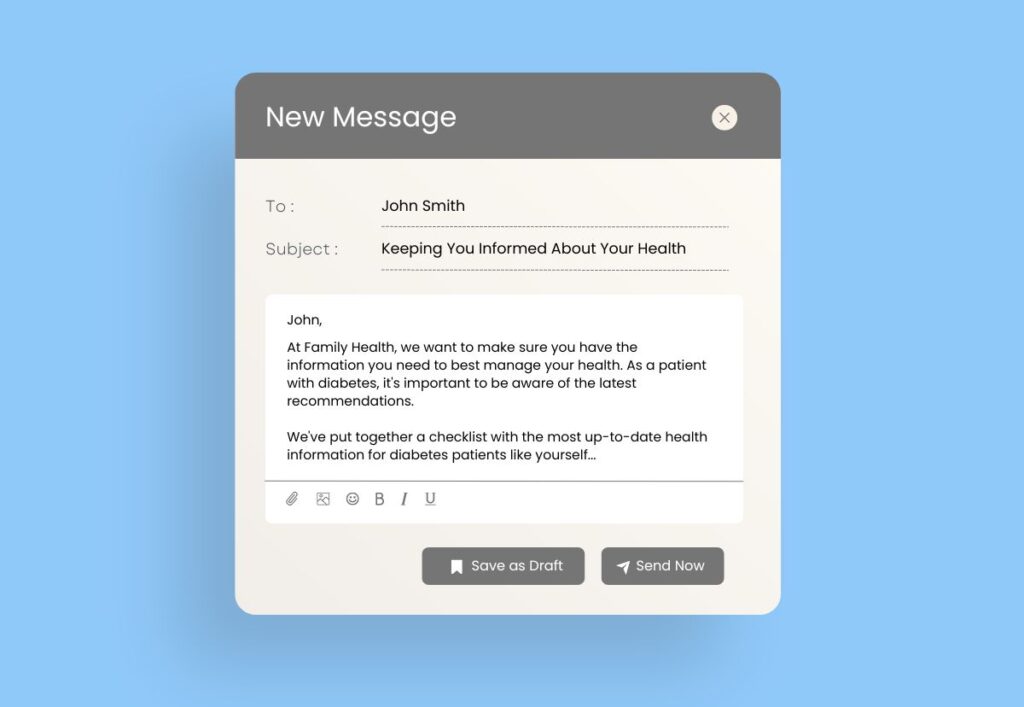
Healthcare: Patient education
Healthcare providers can use drip campaigns to send patients educational content related to their conditions, reminders for check-ups or vaccinations, and wellness tips. These campaigns address the pain point of managing health effectively and staying informed about preventive care.
Retail: Seasonal promotions
Retail stores could implement drip emails around seasonal themes, starting with a heads-up on upcoming promotions, followed by exclusive early access for subscribers, and reminders as the sale ends. This strategy tackles the pain point of missing out on deals and new arrivals.
Real estate: Nurturing leads
Real estate agents can nurture leads with a drip campaign that shares market insights, available listings, home buying/selling tips, and customer success stories. This series helps address the common pain points of navigating the real estate market and finding the right property.
Legal: Know-your-rights series
Legal firms might send a drip campaign educating subscribers on their rights regarding common legal issues, tips for avoiding legal pitfalls, and the benefits of consultation for specific scenarios. This approach addresses the pain point of understanding legal rights and when to seek professional advice.
Drip marketing FAQs
In marketing, the term “drip” refers to the gradual release of a series of automated messages over time to contacts or prospects. This spaced-out messaging strategy is designed to “drip” content, offers, and value steadily to build engagement and familiarity instead of a single broadcast blast. The pacing is optimized to convert cold leads into customers throughout of the multi-touch drip campaign.
Drip campaigns derive their name from an analogy to a steady water drip nourishing a plant over time. Watering a sapling with a blast from a firehose doesn’t work well – measured drips over time lead to healthy growth. The same is true for your target audience. Spacing out content and offers fosters engagement and builds trust through a consistent “drip” rather than overwhelming them.
For maximum impact, effective drip campaign strategies hyper-target specific audience personas and map out an automated series of 4-12 compelling messages that progressively guide consumers through educational awareness to informed product consideration. This sequencing entices engagement by revealing more value over time, combining promotions with related content that maintains interest. The best campaigns incorporate dynamic personalization and make simple calls-to-action at each step to complete, drawing recipients closer to conversion in a customized funnel tailored to their evolving needs.
Become a drip marketing master with Birdeye
Now that you understand the components and best practices of successful drip campaigns, it’s time to start planning and executing effective campaigns for your business. Treat prospects and customers like valued friends, not faceless targets, and the results will follow.
If you’re ready to give drip marketing a try, you need the right tools to get the job done. This is where Birdeye comes into the picture. From mass texting to automation and everything in between, Birdeye makes it easy to reach your customers, get more done in less time, and measure results.
Watch a demo today, and let us show you how our AI-powered platform provides the tools and intel needed to master drip marketing.

Originally published



